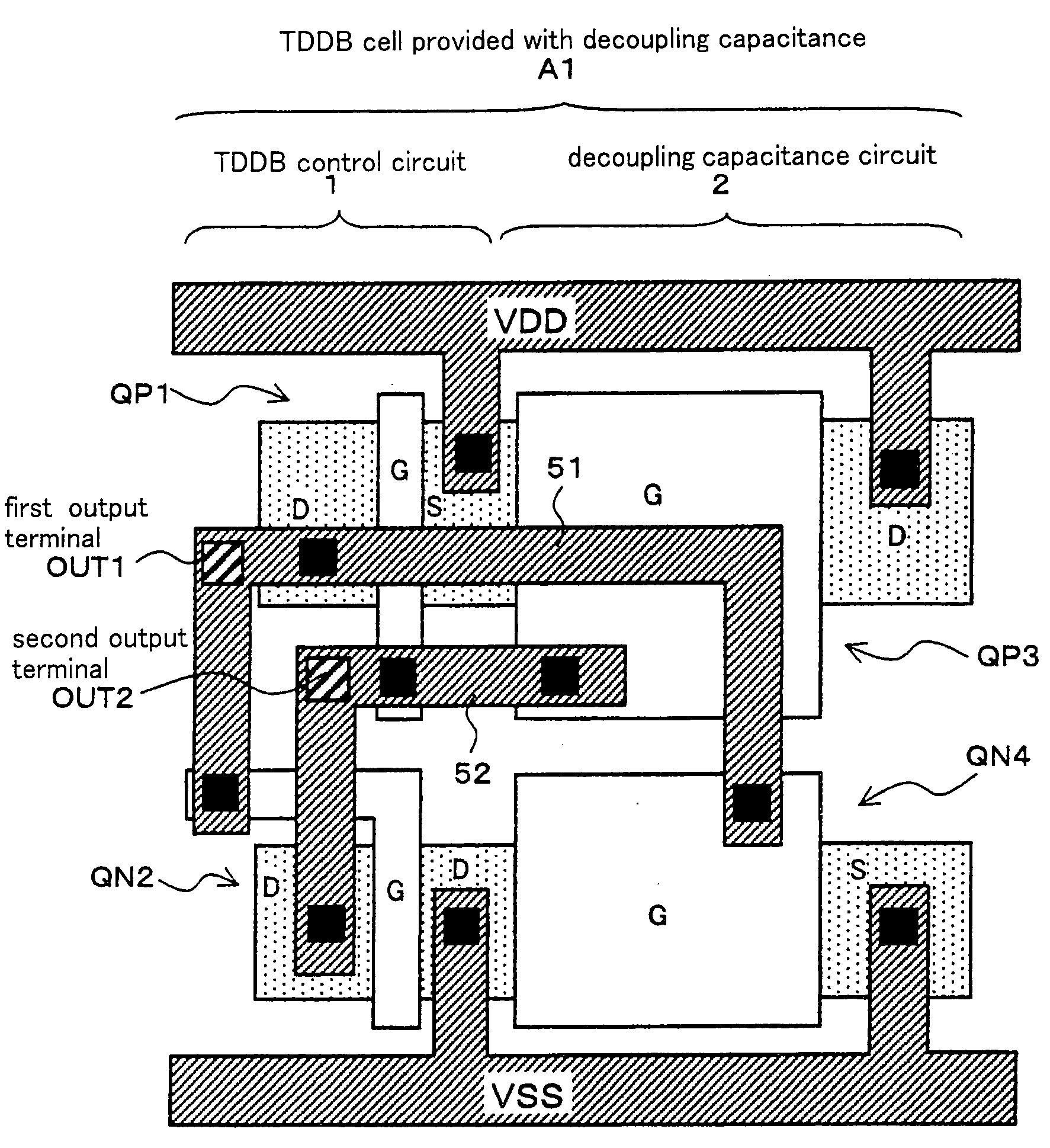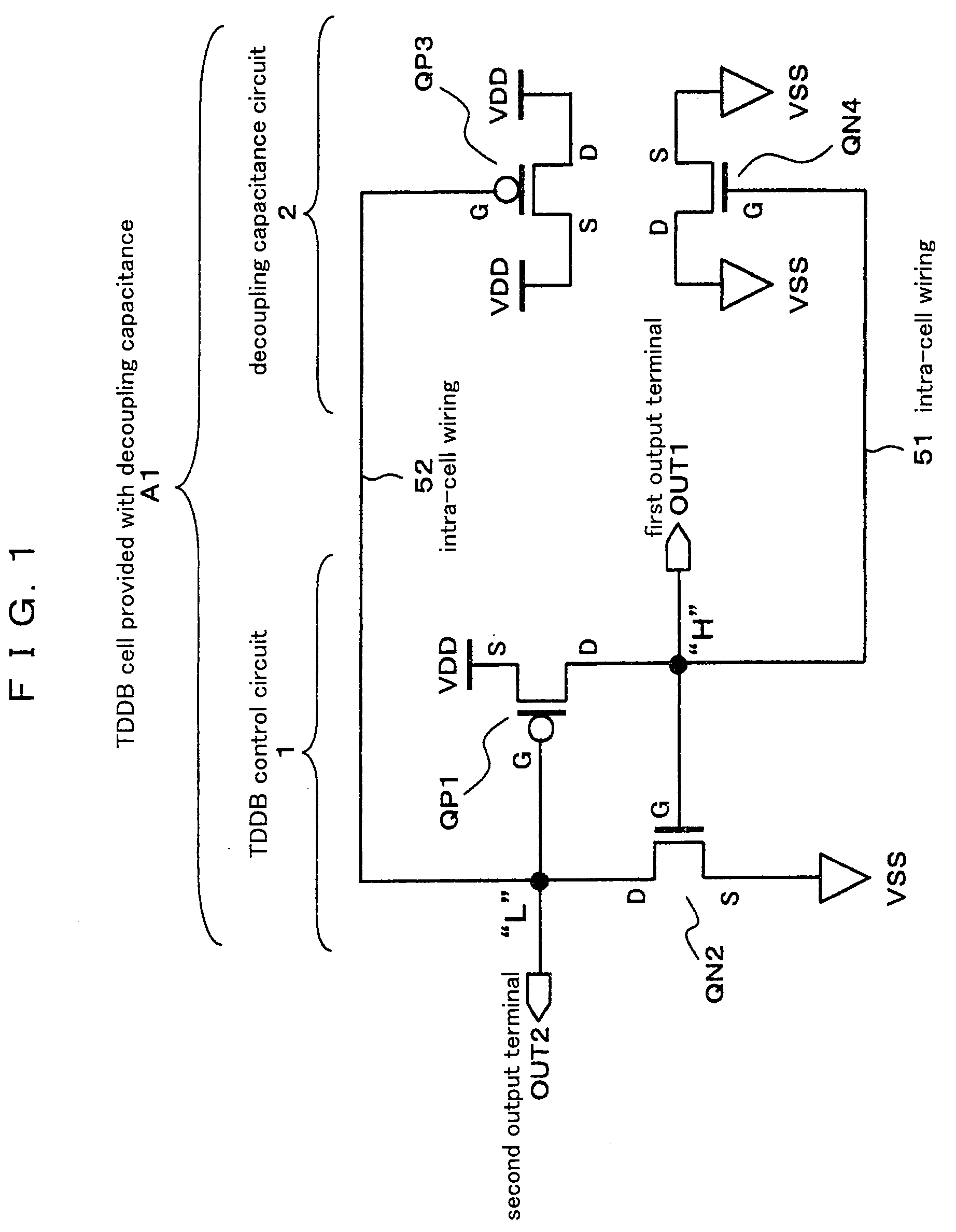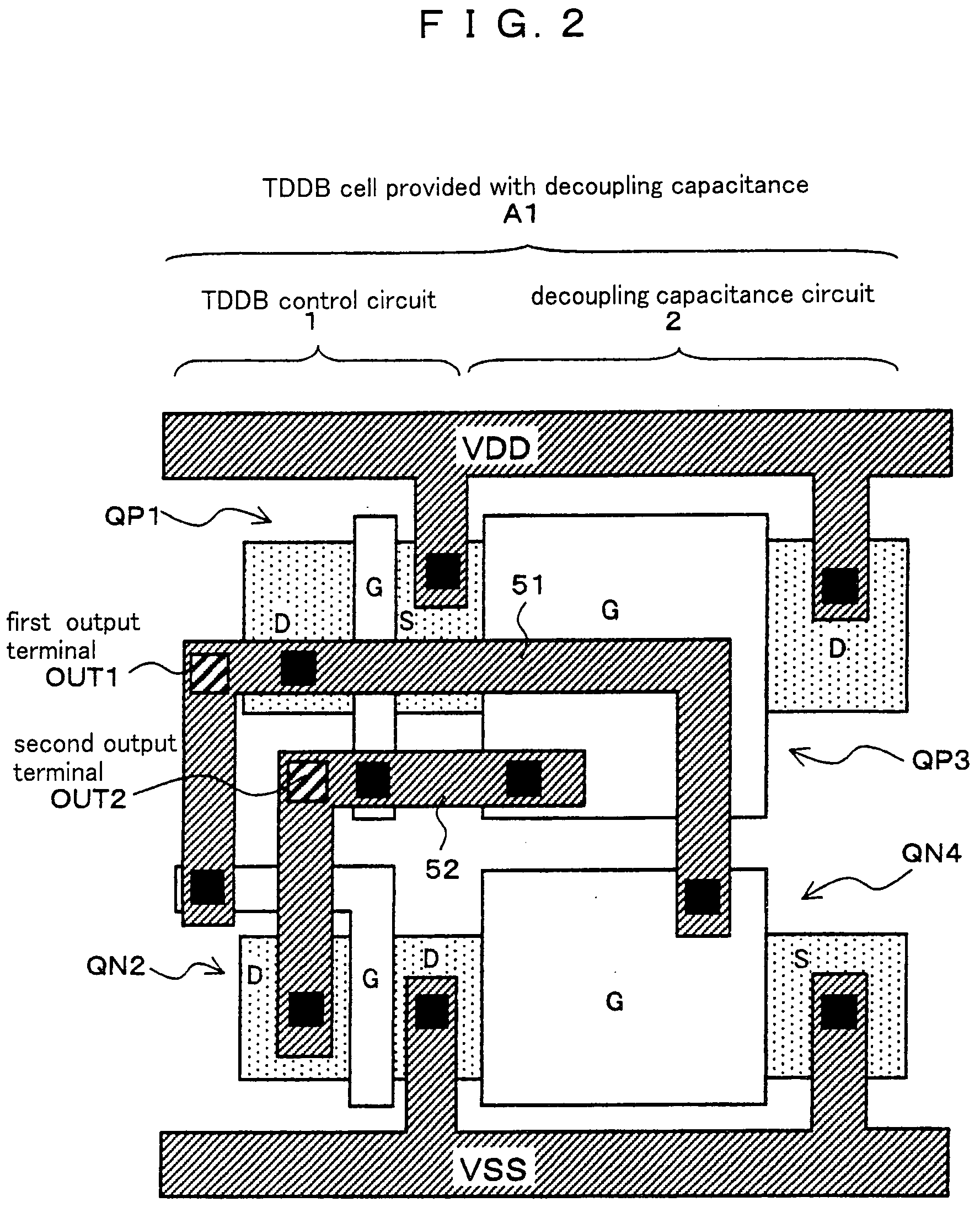Semiconductor integrated circuit and method of designing semiconductor integrated circuit
a technology of integrated circuits and semiconductors, applied in logic circuits using specific components, pulse techniques, instruments, etc., can solve the problems of reducing the withstanding voltage, time dependent dielectric breakdown (tddb) when a voltage is applied, and unfavorable factor for increasing the chip area, so as to prevent the tddb from deteriorating
- Summary
- Abstract
- Description
- Claims
- Application Information
AI Technical Summary
Benefits of technology
Problems solved by technology
Method used
Image
Examples
embodiment 1
Preferred Embodiment 1
[0106]FIG. 1 is a circuit diagram illustrating a TDDB control cell A1 provided with a decoupling capacitance as a semiconductor integrated circuit according to a preferred embodiment 1 of the present invention. FIG. 2 is a layout plan view of the TDDB control cell A1. The TDDB control cell A1 comprises a TDDB control circuit 1 and a decoupling capacitance circuit 2 connected to the TDDB control circuit 1.
[0107]The TDDB control circuit 1 includes a first transistor QP1 of P-channel type and a second transistor QN2 of N-channel type. A source of the first transistor QP1 is connected to a high-voltage power supply wiring (VDD). A source of the second transistor QN2 is connected to a low-voltage power supply wiring (VSS). A gate of the first transistor QP1 is connected to a drain of the second transistor QN2. A drain of the first transistor QP1 is connected to a gate of the second transistor QN2.
[0108]The decoupling capacitance circuit 2 comprises a third transisto...
embodiment 2
Preferred Embodiment 2
[0123]FIG. 5 is a circuit diagram illustrating a TDDB control cell A2 provided with a correction circuit as a semiconductor integrated circuit according to a preferred embodiment 2 of the present invention. FIG. 6 is a layout plan view of the TDDB control cell A2.
[0124]The TDDB control cell A2 provided with the correction circuit according to the present preferred embodiment comprises a TDDB control circuit 1 and a correction circuit 3. The TDDB control circuit 1 is constituted in a manner similar to the preferred embodiment 1 and is not described again. The correction circuit 3 is a cell having the same role as that of the correction cells 20, 21 and 22 shown in FIG. 3 according to the preferred embodiment 1. An inverter comprising a fifth transistor QP5 of the P-channel type and a sixth transistor QN6 of the N-channel type, can be quoted as a constitutional example of the correction circuit 3. A source of the fifth transistor QP5 is connected to a high-voltag...
embodiment 3
Preferred Embodiment 3
[0126]FIG. 7 is a circuit diagram illustrating a decoupling capacitance cell A3 as a semiconductor integrated circuit according to a preferred embodiment 3 of the present invention. FIG. 8 is a layout plan view of the decoupling capacitance cell A3. The decoupling capacitance cell A3 comprises a transistor QP7 of the P-channel type and an eighth transistor QN8 of the N-channel type. A drain and a source of the transistor QP7 of the P-channel type are connected to a high-voltage power supply wiring (VDD). A drain and a source of the transistor QN8 of the N-channel type are connected to a low-voltage power supply wiring (VSS). An input terminal IN7 is connected to a gate of the transistor QP7 of the P-channel type. An input terminal IN8 is connected to a gate of the transistor QN8 of the N-channel type.
[0127]FIG. 9 is a layout plan view illustrating a part of a logical block including decoupling capacitance cells A3 and A3′ and the TDDB control cell A1 provided w...
PUM
 Login to View More
Login to View More Abstract
Description
Claims
Application Information
 Login to View More
Login to View More - R&D
- Intellectual Property
- Life Sciences
- Materials
- Tech Scout
- Unparalleled Data Quality
- Higher Quality Content
- 60% Fewer Hallucinations
Browse by: Latest US Patents, China's latest patents, Technical Efficacy Thesaurus, Application Domain, Technology Topic, Popular Technical Reports.
© 2025 PatSnap. All rights reserved.Legal|Privacy policy|Modern Slavery Act Transparency Statement|Sitemap|About US| Contact US: help@patsnap.com



